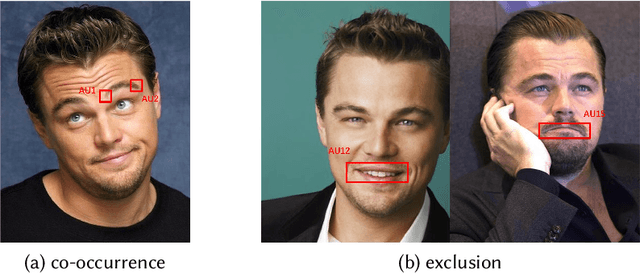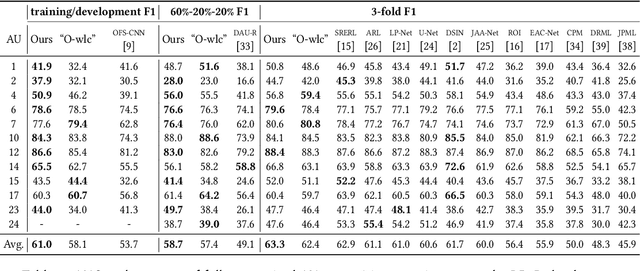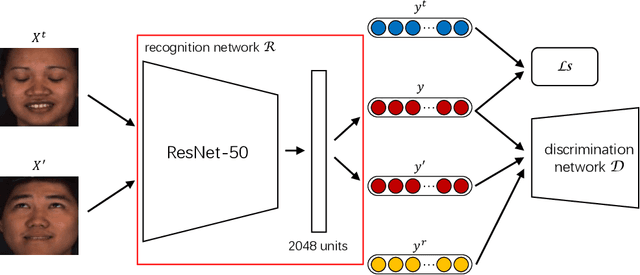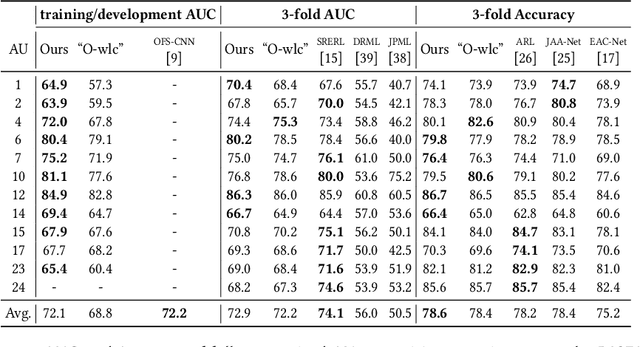Yanan Chang
MEDIC: A Multimodal Empathy Dataset in Counseling
May 04, 2023Abstract:Although empathic interaction between counselor and client is fundamental to success in the psychotherapeutic process, there are currently few datasets to aid a computational approach to empathy understanding. In this paper, we construct a multimodal empathy dataset collected from face-to-face psychological counseling sessions. The dataset consists of 771 video clips. We also propose three labels (i.e., expression of experience, emotional reaction, and cognitive reaction) to describe the degree of empathy between counselors and their clients. Expression of experience describes whether the client has expressed experiences that can trigger empathy, and emotional and cognitive reactions indicate the counselor's empathic reactions. As an elementary assessment of the usability of the constructed multimodal empathy dataset, an interrater reliability analysis of annotators' subjective evaluations for video clips is conducted using the intraclass correlation coefficient and Fleiss' Kappa. Results prove that our data annotation is reliable. Furthermore, we conduct empathy prediction using three typical methods, including the tensor fusion network, the sentimental words aware fusion network, and a simple concatenation model. The experimental results show that empathy can be well predicted on our dataset. Our dataset is available for research purposes.
Facial Affective Behavior Analysis Method for 5th ABAW Competition
Mar 16, 2023Abstract:Facial affective behavior analysis is important for human-computer interaction. 5th ABAW competition includes three challenges from Aff-Wild2 database. Three common facial affective analysis tasks are involved, i.e. valence-arousal estimation, expression classification, action unit recognition. For the three challenges, we construct three different models to solve the corresponding problems to improve the results, such as data unbalance and data noise. For the experiments of three challenges, we train the models on the provided training data and validate the models on the validation data.
Emotional Reaction Intensity Estimation Based on Multimodal Data
Mar 16, 2023Abstract:This paper introduces our method for the Emotional Reaction Intensity (ERI) Estimation Challenge, in CVPR 2023: 5th Workshop and Competition on Affective Behavior Analysis in-the-wild (ABAW). Based on the multimodal data provided by the originazers, we extract acoustic and visual features with different pretrained models. The multimodal features are mixed together by Transformer Encoders with cross-modal attention mechnism. In this paper, 1. better features are extracted with the SOTA pretrained models. 2. Compared with the baseline, we improve the Pearson's Correlations Coefficient a lot. 3. We process the data with some special skills to enhance performance ability of our model.
Multi-Task Learning for Emotion Descriptors Estimation at the fourth ABAW Challenge
Jul 20, 2022

Abstract:Facial valence/arousal, expression and action unit are related tasks in facial affective analysis. However, the tasks only have limited performance in the wild due to the various collected conditions. The 4th competition on affective behavior analysis in the wild (ABAW) provided images with valence/arousal, expression and action unit labels. In this paper, we introduce multi-task learning framework to enhance the performance of three related tasks in the wild. Feature sharing and label fusion are used to utilize their relations. We conduct experiments on the provided training and validating data.
Hand-Assisted Expression Recognition Method from Synthetic Images at the Fourth ABAW Challenge
Jul 20, 2022
Abstract:Learning from synthetic images plays an important role in facial expression recognition task due to the difficulties of labeling the real images, and it is challenging because of the gap between the synthetic images and real images. The fourth Affective Behavior Analysis in-the-wild Competition raises the challenge and provides the synthetic images generated from Aff-Wild2 dataset. In this paper, we propose a hand-assisted expression recognition method to reduce the gap between the synthetic data and real data. Our method consists of two parts: expression recognition module and hand prediction module. Expression recognition module extracts expression information and hand prediction module predicts whether the image contains hands. Decision mode is used to combine the results of two modules, and post-pruning is used to improve the result. F1 score is used to verify the effectiveness of our method.
Facial Action Unit Recognition Based on Transfer Learning
Mar 25, 2022
Abstract:Facial action unit recognition is an important task for facial analysis. Owing to the complex collection environment, facial action unit recognition in the wild is still challenging. The 3rd competition on affective behavior analysis in-the-wild (ABAW) has provided large amount of facial images with facial action unit annotations. In this paper, we introduce a facial action unit recognition method based on transfer learning. We first use available facial images with expression labels to train the feature extraction network. Then we fine-tune the network for facial action unit recognition.
Exploring Adversarial Learning for Deep Semi-Supervised Facial Action Unit Recognition
Jun 04, 2021



Abstract:Current works formulate facial action unit (AU) recognition as a supervised learning problem, requiring fully AU-labeled facial images during training. It is challenging if not impossible to provide AU annotations for large numbers of facial images. Fortunately, AUs appear on all facial images, whether manually labeled or not, satisfy the underlying anatomic mechanisms and human behavioral habits. In this paper, we propose a deep semi-supervised framework for facial action unit recognition from partially AU-labeled facial images. Specifically, the proposed deep semi-supervised AU recognition approach consists of a deep recognition network and a discriminator D. The deep recognition network R learns facial representations from large-scale facial images and AU classifiers from limited ground truth AU labels. The discriminator D is introduced to enforce statistical similarity between the AU distribution inherent in ground truth AU labels and the distribution of the predicted AU labels from labeled and unlabeled facial images. The deep recognition network aims to minimize recognition loss from the labeled facial images, to faithfully represent inherent AU distribution for both labeled and unlabeled facial images, and to confuse the discriminator. During training, the deep recognition network R and the discriminator D are optimized alternately. Thus, the inherent AU distributions caused by underlying anatomic mechanisms are leveraged to construct better feature representations and AU classifiers from partially AU-labeled data during training. Experiments on two benchmark databases demonstrate that the proposed approach successfully captures AU distributions through adversarial learning and outperforms state-of-the-art AU recognition work.
 Add to Chrome
Add to Chrome Add to Firefox
Add to Firefox Add to Edge
Add to Edge